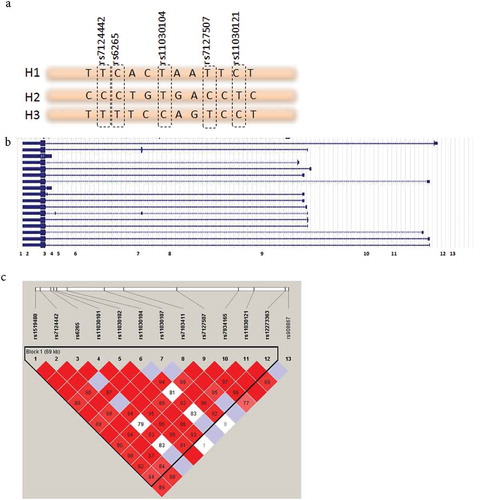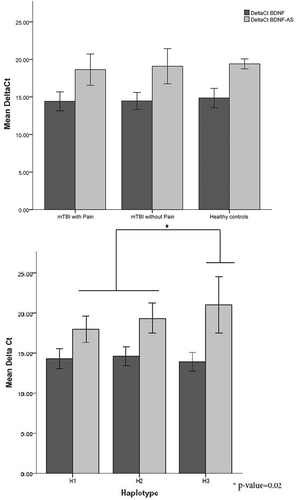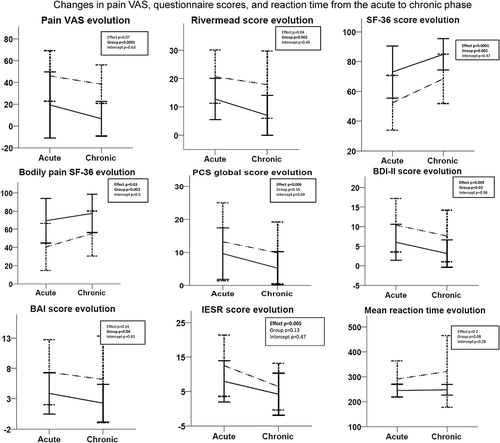Figures & data
Table 1. Details of candidate SNPs selected from the literature.
Table 2. Description of post-concussion symptoms.
Figure 1. (a) Alleles of SNPs are represented in a short stretch of DNA. Combinations of SNPs used to construct haplotypes are highlighted. (b) BDNF gene structure from refSeq. Full boxes are exons, lines represent introns. Numbers (1–13) represent SNP locations in the gene. (c) LD plot of the SNPs spanning the BDNF gene. The numbers correspond to D′ values between SNPs. One block of 69 kbp was constructed with Haploview 4.2 using the solid spine method.

Table 3. Haplotypes frequency distribution and association with pain status and all phenotypesa.
Table 4. Expression data for top five SNPs in BDNF in public databases and mTBI patientsa.
Figure 2. (a) qPCR results of BDNF and BDNF-AS mRNA expression relative to GAPDH (delta Ct) comparison between mTBI patients with pain and without pain and healthy controls. (b) qPCR results of BDNF and BDNF-AS mRNA expression relative to GAPDH (delta Ct) comparison between the three haplotypes H1 (n = 44), H2 (n = 25), and H3 (n = 20). *Corresponds to the significant group difference between BDNF-AS level of H3 compared to BDNF-AS levels of H1 and H2. Haplotypes are composed from rs7124442|rs6265|rs11030104|rs7127507|rs11030121.

Figure 3. Comparison between acute and chronic questionnaire (Rivermead, SF-36, Pain Catastrophizing Scale, Beck Depression Inventory, Beck Anxiety Inventory, Impact of Event Scale) scores, pain VAS, and mean reaction time on the PVT. A repeated measures ANOVA was used. Dotted lines represent mTBI patients with pain (n = 18); full lines represent mTBI patients without pain (n = 18).

